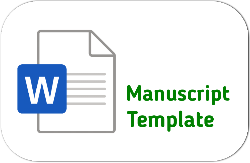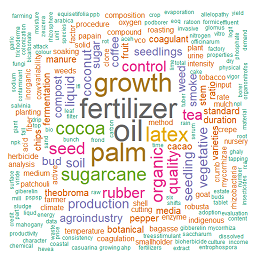Pengaruh Aplikasi Pupuk Cair Anorganik dan Organik dengan Frekuensi Aplikasi yang Berbeda pada Pertumbuhan Tanaman Teh Menghasilkan
DOI:
https://doi.org/10.25181/jaip.v9i2.1941Keywords:
bud ratio, input effectivity, input factor, tea productionAbstract
Input factor is one of the determinator the quality and response of the tea plant growth. Inorganic fertilizer input still dominates in Indonesian plantations due to the lack of comprehensive evaluation of organic fertilizers, especially in liquid form. This study aims to determine the effect of inorganic and organic liquid fertilizer applications and the frequency of their application on the growth of tea plants. The experiment was carried out based on a Randomized Block Design (RBD) consisting of six treatment combinations, including tap water application once a week, tap water once every two weeks, 1% urea once a week, 1% urea every two weeks, 1% POC once a week and 1% POC once every two weeks. Experiments were carried out on yielding tea plants with the 3rd year of pruning stage. The parameters observed were shoot production (kg.plot-1), weight of banji and pekoe (g.100g-1) and the ratio of banji/pekoe. The results showed that the application of urea foliar fertilizer and liquid organic fertilizer with different application frequencies did not have a significant effect on each observed parameter. Application of 1% liquid organic fertilizer once every two weeks has the potential to increase tea productivity by showing a relatively high production of tea (6.88 kg.plot-1) compared to other treatments.Downloads
References
Amusan, A. O., Adetunji, M. T., Azeez, J. O., & Bodunde, J. G. (2011). Effect of the integrated use of legume residue, poultry manure and inorganic fertilizers on maize yield, nutrient uptake and soil properties. Nutrient Cycling in Agroecosystems. https://doi.org/10.1007/s10705-011-9432-6
Badan Pusat Statistik. (2018) Statistik Teh Indonesia. Badan Pus. Stat. Indones.
Basak, N. (1996). Fertilizers and Environment. Fertilizers and Environment, December. https://doi.org/10.1007/978-94-009-1586-2
Calderón, F. J., Benjamin, J., & Vigil, M. F. (2015). A comparison of corn (Zea mays L.) residue and its biochar on soil C and plant growth. PLoS ONE. https://doi.org/10.1371/journal.pone.0121006
Chen, M., Cui, Y., Bai, F., & Wang, J. (2013). Effect of two biogas residues’ application on copper and zinc fractionation and release in different soils. Journal of Environmental Sciences (China). https://doi.org/10.1016/S1001-0742(12)60246-0
Davarpanah, S., Tehranifar, A., Davarynejad, G., Aran, M., Abadía, J., & Khorassani, R. (2017). Effects of foliar nano-nitrogen and Urea fertilizers on the physical and chemical properties of pomegranate (Punica granatum cv. ardestani) fruits. HortScience, 52(2), 288–294. https://doi.org/10.21273/HORTSCI11248-16
Diacono, M., & Montemurro, F. (2015). Effectiveness of Organic Wastes as Fertilizers and Amendments in Salt-Affected Soils. Agriculture. https://doi.org/10.3390/agriculture5020221
Dutta, R., Smaling, E. M. A., Bhagat, R. M., Tolpekin, V. A., & Stein, A. (2012). Analysis of factors that determine tea productivity in Northeastern India: A combined statistical and modelling approach. Experimental Agriculture, 48(1), 64–84. https://doi.org/10.1017/S0014479711000834
Gebrewold, A. Z. (2018). Review on integrated nutrient management of tea (Camellia sinensis L.). Cogent Food & Agriculture, 4(1), 1–12. https://doi.org/10.1080/23311932.2018.1543536
Hasani, M., Zamani, Z., Savaghebi, G., & Sofla, H. S. (2016). Effect of foliar and soil application of Urea on leaf nutrients concentrations, yield and fruit quality of pomegranate. Journal of Plant Nutrition, 39(6), 749–755. https://doi.org/10.1080/01904167.2015.1047525
International Tea Committee. (2020). Global Tea Industry: World Population and Tea Consumption. Annual Bulletin of Statistic
Ji, R., Dong, G., Shi, W., & Min, J. (2017). Effects of liquid organic fertilizers on plant growth and rhizosphere soil characteristics of chrysanthemum. Sustainability (Switzerland), 9(5), 1–16. https://doi.org/10.3390/su9050841
Li, X., Guo, J., Dong, R., Ahring, B. K., & Zhang, W. (2016). Properties of plant nutrient: Comparison of two nutrient recovery techniques using liquid fraction of digestate from anaerobic digester treating pig manure. Science of the Total Environment. https://doi.org/10.1016/j.scitotenv.2015.11.172
Niewiadomska, A., Sulewska, H., Wolna-Maruwka, A., Ratajczak, K., Waraczewska, Z., & Budka, A. (2020). The influence of bio-stimulants and foliar fertilizers on yield, plant features, and the level of soil biochemical activity in white lupine (Lupinus albus L.) cultivation. Agronomy, 10(1). https://doi.org/10.3390/agronomy10010150
Patil, B., & Chetan, H. (2016). Foliar fertilization of nutrients. Marumegh Kisaan E Patrika, 3(January), 49–53.
Phibunwatthanawong, T., & Riddech, N. (2019). Liquid organic fertilizer production for growing vegetables under hydroponic condition. International Journal of Recycling of Organic Waste in Agriculture, 8(4), 369–380. https://doi.org/10.1007/s40093-019-0257-7
Shambhavi, S., Kumar, R., Sharma, S. P., Verma, G., Sharma, R. P., & Sharma, S. K. (2017). Long-term effect of inorganic fertilizers and amendments on productivity and root dynamics under maize-wheat intensive cropping in an acid Alfisol. Journal of Applied and Natural Science, 9(4), 2004–2012. https://doi.org/10.31018/jans.v9i4.1480
Souza, B. M., Molfetta-Machado, J. B., Freschi, L., Figueira, A., Purgatto, E., Buckeridge, M. S., van Sluys, M. A., & Mercier, H. (2010). Axillary bud development in pineapple nodal segments correlates with changes on cell cycle gene expression, hormone level, and sucrose and glutamate contents. In Vitro Cellular and Developmental Biology - Plant, 46(3), 281–288. https://doi.org/10.1007/s11627-009-9276-9
Thakur, R., Sawarkar, S. D., Vaishya, U. K., & Singh, M. (2011). Impact of continuous use of inorganic fertilizers and organic manure on soil properties and productivity under soybean-wheat intensive cropping of a vertisol. Journal of the Indian Society of Soil Science.
Velthof, G. L., Barot, S., Bloem, J., Butterbach-Bahl, K., de Vries, W., Kros, J., Lavelle, P., Olesen, J. E., & Oenema, O. (2011). Nitrogen as a threat to European soil quality - Chapter 21. In M. A. Sutton, C. M. Howard, J. W. Erisman, G. Billen, A. Bleeker, P. Grennfelt, H. van Grinsven, & B. Grizzetti (Eds.), The European Nitrogen Assessment. Sources, effects and policy perspectives (pp. 495-510).
Wong, W. S., Tan, S. N., Ge, L., Chen, X., & Yong, J. W. H. (2015). The Importance of Phytohormones and Microbes in Biofertilizers (Issue December). https://doi.org/10.1007/978-3-319-24654-3_6
Downloads
Published
How to Cite
Issue
Section
License
Copyright (c) 2021 Faris Nur Fauzi Athallah, Restu Wulansari, Eko Pranoto, Muhammad Alimin

This work is licensed under a Creative Commons Attribution-ShareAlike 4.0 International License.
Authors who publish with Jurnal Agro Industri Perkebunan agree to the following terms:
Authors retain copyright and grant the Jurnal Agro Industri Perkebunan right of first publication with the work simultaneously licensed under a Creative Commons Attribution License (CC BY-SA 4.0) that allows others to share (copy and redistribute the material in any medium or format) and adapt (remix, transform, and build upon the material for any purpose, even commercially) with an acknowledgment of the work's authorship and initial publication in Jurnal Agro Industri Perkebunan.
Authors are able to enter into separate, additional contractual arrangements for the non-exclusive distribution of the journal's published version of the work (e.g., post it to an institutional repository or publish it in a book), with an acknowledgment of its initial publication in Jurnal Agro Industri Perkebunan. Authors are permitted and encouraged to post their work online (e.g., in institutional repositories or on their website) prior to and during the submission process, as it can lead to productive exchanges, as well as earlier and greater citation of published work.


























